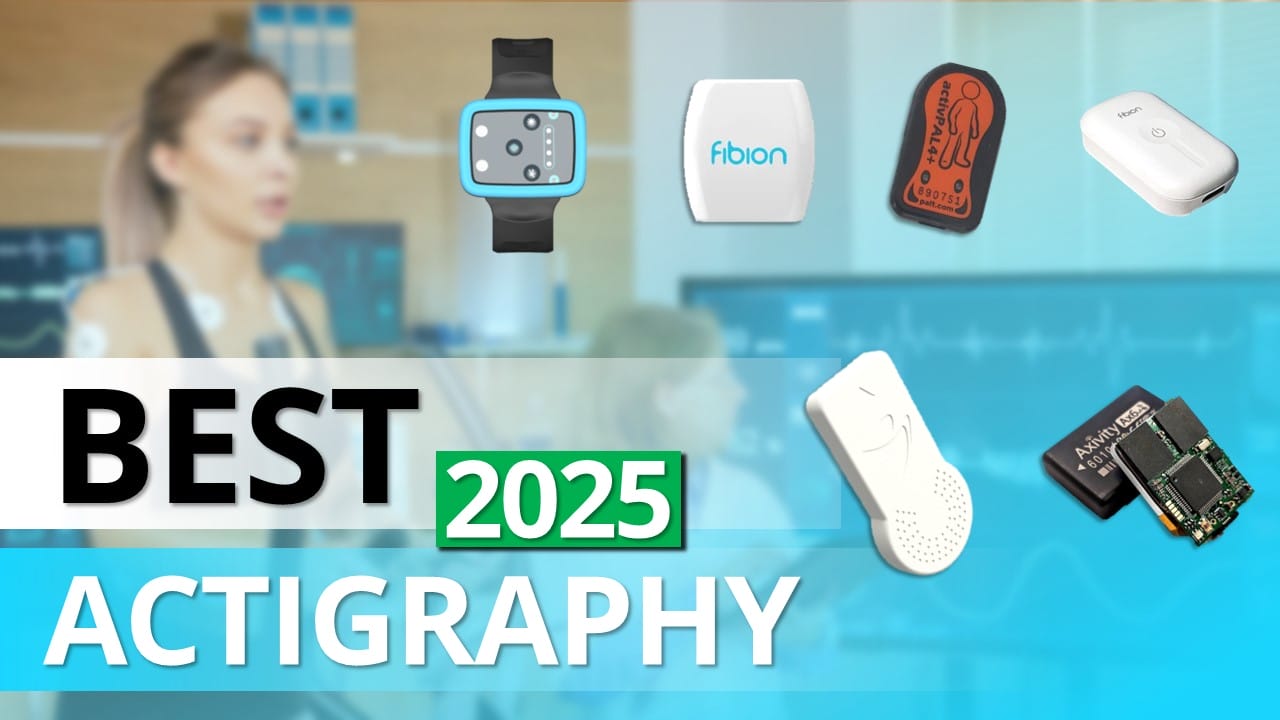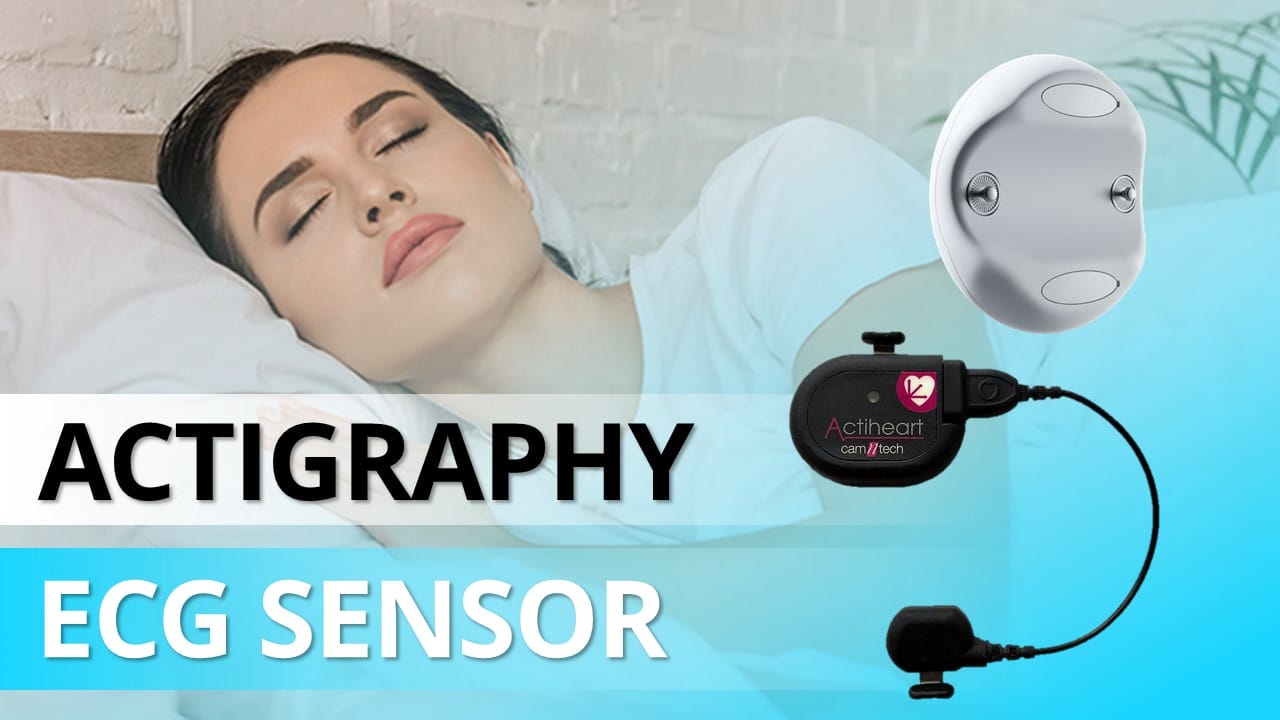Introduction
In health and behavioral research, combining actigraphy with ECG (electrocardiogram) provides a valuable way to simultaneously monitor physical activity and cardiac functions. This integration enables researchers to collect comprehensive data non-invasively, enhancing both the scope and accuracy of their studies.
This guide is designed to help researchers understand the benefits of using these technologies together and to assist in selecting the appropriate device for specific research needs. Choosing the right equipment can significantly improve the quality of your data, offering deeper insights into physical and heart health.
To assist you in making an informed choice, we have prepared a detailed comparison sheet that outlines the specifications, features, and pricing of the top actigraphy devices with ECG. This resource is designed to help you make the right decision for your project.
Download the Comparison Sheet of Actigraphy Devices with ECG Here
By accessing this comparison sheet, you can quickly evaluate the options available, ensuring that you select a device that best fits your research requirements.
Understanding Actigraphy Combined with ECG
Integrating actigraphy with one-lead ECG allows researchers to simultaneously monitor physical activity and basic cardiac functions. While one-lead ECG does not provide as detailed a view as multi-lead systems, it is highly effective for capturing the heart’s electrical activity from a single point. This capability is particularly valuable for research applications that require monitoring of heart rate variability (HRV) alongside physical activity.
One-lead ECG, combined with actigraphy, is adept at tracking cardiac responses during various physical states, including exercise, rest, and sleep. It not only provides HRV metrics, which are crucial for assessing autonomic nervous system function and stress responses but also allows researchers to review the full ECG curve. This review capability ensures the accuracy of HRV analyses, as researchers can verify that the variability is not influenced by underlying arrhythmias or other anomalies in heart rhythm.
“Combining actigraphy with ECG provides a comprehensive method for monitoring both physical activity and cardiac health. This dual measurement approach is particularly useful in applications such as assessing heart rate variability, monitoring cardiac responses during physical activity, and evaluating overall cardiovascular health in various populations. The integration of these technologies offers valuable insights into how physical exertion impacts heart function.” – Dr. Olli Tikkanen
This technology is particularly useful in studies focused on cardiovascular health, fitness assessments, and psychological research where understanding the interaction between activity levels and cardiac response is critical. By leveraging one-lead ECG with actigraphy, researchers gain a comprehensive tool that enhances the validity of their findings and provides deeper insights into the interplay between physical activity and heart health.
Key Features to Consider When Buying Actigraphy and ECG Devices
When selecting an actigraphy device with ECG capabilities, particularly one-lead ECG, there are several key features to consider to ensure the device meets your research needs effectively:
- Sensor Accuracy: High accuracy in both the actigraphy and ECG components is crucial for reliable data. Ensure that the device can accurately track physical activity and detect heart rhythms without significant artifacts.
- Data Integration: Look for devices that offer seamless integration of activity and ECG data. This feature is essential for synchronizing data streams and providing a comprehensive overview of the subject’s physical and cardiac activity.
- Battery Life and Storage: Adequate battery life and data storage are important, especially for longitudinal studies. Devices should be capable of collecting data continuously over extended periods without the need for frequent recharging or data transfer.
- User Comfort and Compliance: Since participants may wear these devices for long durations, their design should be ergonomic and comfortable. This consideration helps improve participant compliance and ensures high-quality data collection.
- Software and Data Analysis Tools: Consider the software provided with the device. It should offer robust tools for analyzing both actigraphy and ECG data, including advanced metrics like HRV, and the ability to inspect the ECG waveform for additional clinical insights.
By focusing on these features, researchers can select a device that not only fits their specific project needs but also enhances the overall quality and reliability of the collected data.
How to Choose the Right Device for Your Research
Choosing the right actigraphy device with ECG, especially one that includes one-lead ECG capabilities, involves careful consideration of your study’s specific requirements. Here are some guidelines to help you make the best choice:
- Assess Research Objectives: Define what you need to measure. Are you interested in detailed heart rate variability studies, understanding cardiac responses during physical activity, or monitoring sleep patterns? Ensure the device you choose can accurately gather the specific data you need.
- Consider the Study Population: Think about who will be using the device. Different populations, such as athletes, elderly individuals, or patients with specific medical conditions, may have different requirements in terms of wearability and sensor sensitivity.
- Check Device Compatibility: Make sure the device is compatible with other technology you will be using in your study. It should easily integrate with your existing data systems and software for smooth operation and analysis.
- Evaluate Budget Constraints: Determine your budget and find a device that offers the best balance between cost and functionality. While more advanced features might be appealing, consider whether they are necessary for achieving your research goals.
- Review Data Privacy and Security: Given the sensitive nature of collecting ECG data, ensure that the device complies with all relevant data protection regulations. This is crucial not only for ethical reasons but also for the validity of your research findings.
By following these steps, you can select an actigraphy device with ECG that is well-suited to your research needs, ensuring that you collect accurate and reliable data while adhering to budgetary and regulatory requirements.
Practical Uses of Actigraphy Combined with One-Lead ECG in Research
The integration of actigraphy with one-lead ECG is highly beneficial for various research applications, particularly in fields that require simultaneous monitoring of physical activity and cardiac functions. Here are some practical uses of these devices in research:
- Sleep Studies: Actigraphy combined with one-lead ECG is excellent for sleep research, allowing researchers to monitor sleep patterns and associated cardiac functions. This integration helps in identifying sleep disorders and assessing the impact of sleep quality on heart health.
- Cardiovascular Research: One-lead ECG devices are used to monitor heart rate variability and other cardiac metrics during physical activities. This is crucial in studies aiming to understand the relationship between lifestyle factors and cardiovascular health.
- Sports Science: In sports science, these devices can assess athletes’ physical exertion and recovery by monitoring both activity levels and cardiac responses. This dual data collection is valuable for optimizing training regimes and preventing overtraining.
- Behavioral and Psychological Studies: Monitoring heart rate changes in response to physical activity can provide insights into stress and anxiety levels. Researchers can study how different environments and activities influence psychological states.
By utilizing actigraphy devices with one-lead ECG, researchers can gather comprehensive data that offers deeper insights into human physiology and behavior, enhancing the quality and scope of their studies. This technology not only facilitates more precise health monitoring but also supports a wide range of interdisciplinary research efforts.
Further Assistance
If you’re considering integrating actigraphy with one-lead ECG into your research and need further guidance, our team of experts is here to help. Our specialists, who are experienced researchers themselves, understand the nuances of selecting the right devices for diverse research needs.
Book a Consultation with Our Expert: During the consultation, our expert will discuss your specific research requirements, explore the features and benefits of various devices, and help you determine the best fit for your project. If our solutions do not perfectly match your needs, we are committed to recommending alternative products from other reputable companies that meet your research criteria.
This consultation ensures you receive comprehensive support tailored to your needs, helping you make an informed decision and enhancing the effectiveness of your research tools. Reach out today to schedule your expert consultation and take the first step toward optimizing your research setup.
You Might Also Be Interested
⭐ Read about Best Actigraphy devices in 2025. Read article here.

- 📚 Delve into our comprehensive HRV Article Collection for insightful perspectives on Heart Rate Variability (HRV).
- 🔍 Learn how the advanced features of Fibion Emfit & Fibion Vital can aid you in your HRV research.
- 📅 Planning physical activity, sedentary, and HRV measurement and analysis? For a chat with our expert, book a video call with Dr. Miriam Cabrita.

Frequently asked questions about Integrating Actigraphy and ECG:
What are the benefits of integrating actigraphy with ECG for research? +
Combining actigraphy with ECG enables simultaneous monitoring of physical activity and cardiac functions, providing comprehensive and accurate data essential for health and behavioral studies.
How does one-lead ECG differ from multi-lead ECG systems? +
One-lead ECG provides a basic view of the heart’s electrical activity, suitable for monitoring HRV and basic cardiac functions, whereas multi-lead systems offer detailed cardiac mapping and are used for more complex diagnoses.
What key features should be considered when selecting an actigraphy device with ECG capabilities? +
Important features include sensor accuracy, data integration, battery life, storage capacity, user comfort, and robust data analysis software, ensuring reliable and comprehensive data collection.
What are some practical uses of actigraphy combined with one-lead ECG in research? +
This technology is ideal for sleep studies, cardiovascular research, sports science, and behavioral studies, offering insights into how physical activity and cardiac responses interact in various conditions.
How can researchers ensure their actigraphy device with ECG is compatible with their study requirements? +
Researchers should assess their specific needs, consider the population and environment of the study, and ensure the device integrates well with existing data systems for smooth operation and analysis.
Why is it important to choose a device with adequate data privacy and security measures? +
Selecting a device with strong data protection ensures compliance with regulatory standards and ethical guidelines, which is crucial for the validity and integrity of the research data.















